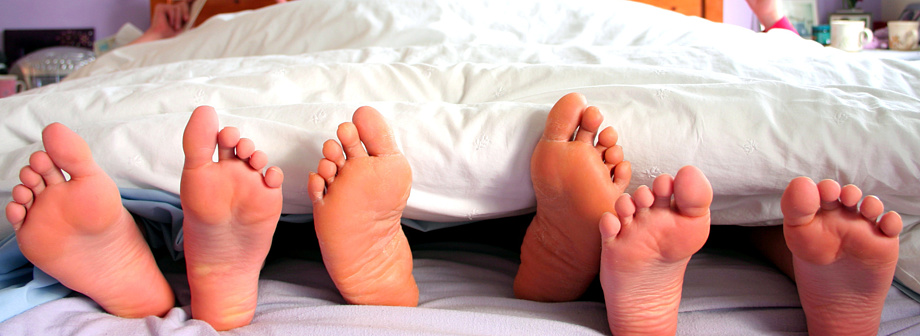
Verruca
What is a verruca?
An area of rough or raised skin, usually on the sole of the foot or around the toes, small black dots may be evident but not always - the black dots are caused by tiny broken blood capillaries. It is important to have verruca diagnosed by a Podiatrist as these can look similar to other foot lesions such as corns. Verruca can become uncomfortable or painful but again this does not always occur, you may have had verruca for a while without noticing.
Verruca are caused by the human papilloma virus and are very common, especially in childhood. A wart is the same as a verruca. It is called a wart when it appears on any part of the body other than the foot.
Where do they come from?
Usually from communal changing areas or walking barefoot around the side of a swimming pool. The virus that causes the verruca survives well in wet conditions.
Will they go away if left untreated?
The body can create antibodies to destroy the virus. If you have a normal healthy immune system the verruca will eventually go, but this can often take years.
Some treatments involve stimulating the body’s immune system to produce an immune response to destroy the verruca.
Can I spread the virus?
Yes. The use of verruca socks and flip-flops in the bathroom at home or in communal areas can help to minimise the chances of spreading the virus. Ensure you do not wear other people’s shoes or share towels.
Should these be treated?
It is easier to treat verruca before they get larger, spread to other parts of the body or to other people. Verruca can also become painful if untreated. It is important to have verruca diagnosed by a qualified Podiatrist as they can look very similar to corns or small foreign bodies that have pierced the skin.
What does treatment involve?
This is dependant on several factors such as age, how long verruca have been present, how many, how large etc. Different treatments offered at Bushey Foot Clinic are as follows:
-
Acids: This involves paring down any dry or dead skin and applying a caustic such as monchloracetic acid or salicylic acid.
-
Cryotherapy: This is often referred to as “freezing”. The verruca are sprayed with liquid nitrogen which causes blistering to the skin. Dead skin will gradually peel off over 2-3 weeks leaving healthy skin underneath.
-
Dry Needling Technique: This can be used on verruca which have spread over a large area and have not responded well to other treatments. It is performed under local anaesthetic and has a 70%-80% success rate. The concept of this technique is to create an immune response to the verruca virus by puncturing one or two of the largest verruca several times, pushing the virus just below the skin. Antibodies are then created against the verruca virus which gradually disappears over a period of 3-4 weeks.
Is treatment painful?
-
Acids: With acids there can be some discomfort 2-3 days after application.
-
Cryotherapy: When verruca are frozen there can be a burning sensation during treatment – discomfort typically wears off after a couple of days.
-
Dry Needling Technique: As this is performed under local anaesthetic there is no pain during the procedure. Once the anaesthesia wears off, there can be discomfort for 4-5 days.

